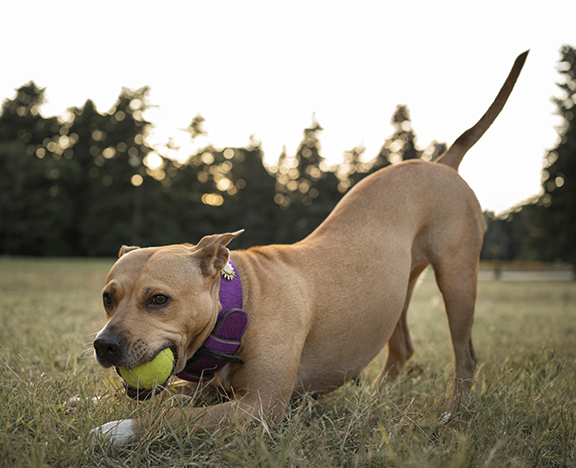With pet ownership on the rise in the United States, many communities have started introducing special amenities and advertising themselves as “pet friendly” to help attract new buyers and renters.
One of the most popular amenities communities are beginning to offer are community dog parks. Enjoyable for both residents and their pets, these safe and clean areas where residents can allow their dogs to run and play off-leash are drawing pet owners in and keeping them happy.
Establishing a dog park also works to reduce pet waste issues in a community by centralizing doggie deposits in one designated area, which is a win for everyone.
LOCATION, LOCATION, LOCATION
Location is the first and most important consideration to take into account when planning a dog park. Ideally, you want to identify an area situated off to the side and preferably towards the back of the community. Likewise, the proposed park should be easily accessible to all residents. Keep in mind also that dog parks do not necessarily have to be located on perfectly flat areas. Is there a piece of land in your community that is not suitable for other uses due to a slope or rough terrain? Consider utilizing this area for a dog park. This will allow you to make more use of available land in the community.
FENCING THE PARK AND DESIGNING AN ENTRANCE
Every dog park includes at least two basic structures: fencing around the perimeter and a staged entrance area. Fences should be five feet or higher to prevent a dog from jumping over it. Entrances should serve as an effective buffer to your park. If possible, consider a double gate system. This area will give everyone some much appreciated breathing room as they enter and exit with their pet. It also serves as an assimilation and introduction area, and also helps to keep dogs from escaping.
GATE PLACEMENT
Where to place the double gate is also an important consideration. Corners of the dog park are not advisable, as this allows new dogs entering the park to easily be cornered by the other dogs as they rush to greet each other. This can create a situation leading to dog fights. Alternatively, gates placed along the side of a park give dogs a full 180 degrees to enter.
DOG PARK SURFACE
Contrary to popular belief, grass should be avoided as a surface for dog parks. For starters, the constant running and romping of dogs will tear grasses up, leaving only exposed dirt, which then become a soupy, muddy mess when it rains. In addition, dog urine contains high levels of nitrogen, which damages the grass, killing it even faster.
Save yourself the expense and maintenance headaches – select an alternative surface. Decomposed granite, for instance, is extremely durable, requires minimal upkeep and is more environmentally friendly. Decomposed granite is made up of very small pieces of granite and can range in size from ¼” inch to a sandy consistency. There are also specially designed artificial turfs for dog parks available on the market today. While the initial cost is higher, the surface will be more attractive and manageable for a longer period of time.
SMALL DOGS AND LARGE DOGS
Many dog parks have two separate sections of the park. One side is for small dogs (usually less than 35 pounds) and another for the big boys. These areas are completely separate enclosures so the dogs cannot mix at all. It can be a good idea to plan the double gate so that it can be used to enter either section of the dog park, saving you money on building costs.
SIGNAGE
Clearly display and enforce the rules for your dog park. Like all parks, your dog park should have set rules and regulations, as well as contact information for authorities and management clearly posted on a permanent sign on the entry gate to the park.
Common dog park rules and regulations:
This park is for the use of residents and their pets only.
Owners are legally responsible for their dogs and any injuries caused by them.
Puppies and dogs must be properly licensed, inoculated and healthy to use the park.
Animals must wear a collar and ID tags at all times.
Owners must clean up after their dogs.
Dogs showing aggression towards people or other animals must be removed from the park.
Animals exhibiting a history of aggressive behavior will not be permitted.
Puppies using the park must be at least four months old.
Owners must not leave their dogs’ unattended or allowed out of sight.
Children under the age of 16 are not permitted in the park unless actively supervised by a parent.
Dogs in heat are not allowed inside the park.
No food, beverages, glass, sharp objects or weapons are permitted inside the park.
Owners must carry a leash at all times. Dogs must be leashed before entering and prior to leaving the park.
Violators will be subject to removal from the park and suspension of park privileges.
WATER SUPPLY
An available running water supply for dogs in the park is very important. Avoid large buckets of standing water, as they can spread disease between dogs and can become a perfect breeding ground for mosquitoes in the summer months. A high-low water fountain is ideal for dog parks – the high being for people and the low for pets.
PARK SEATING
Have benches or available seating. A dog park can be a great place to meet fellow residents and socialize, so try to group seating together. Also keep in mind the seating material. Aluminum is a good choice because it is less affected by weather and will not absorb odor like wood will.
CONTROLLING THE POOP AT THE DOG PARK
Lots of dogs mean lots of dog poop. This is something you can absolutely count on when planning a dog park. To curb pet waste problems, consider developing a comprehensive pet waste management plan with a professional pet waste removal service.











